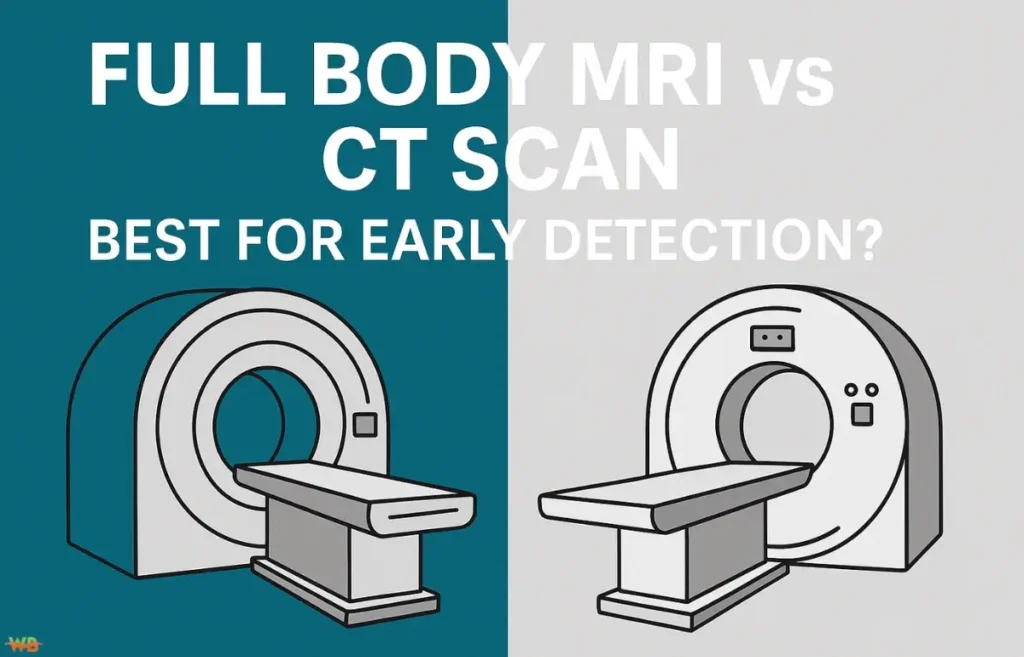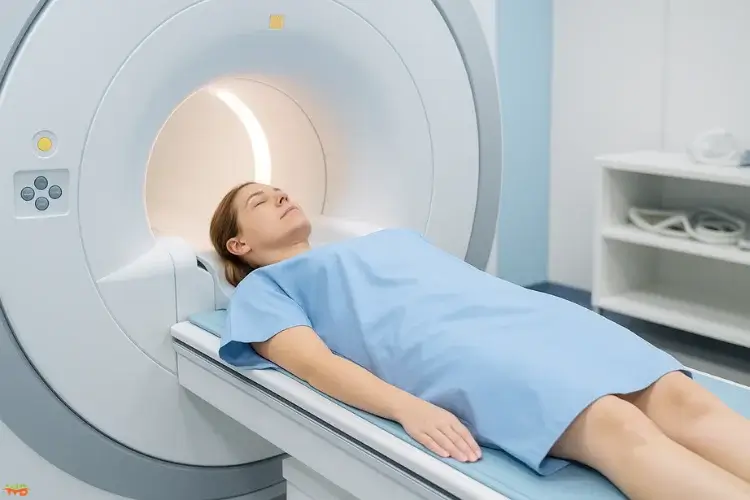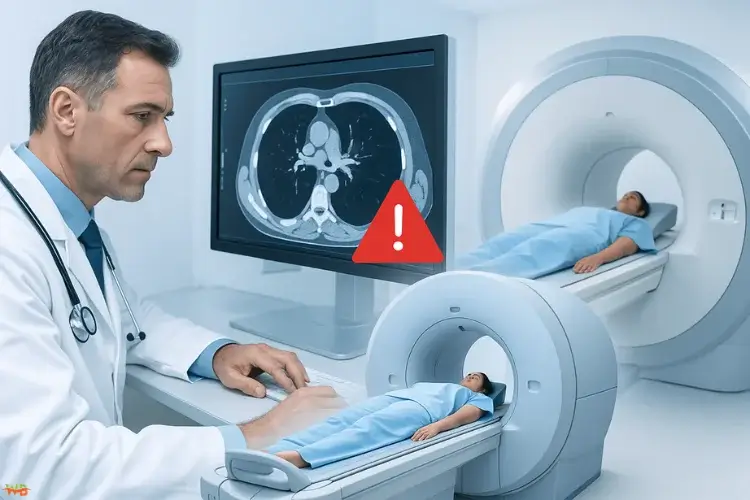When it comes to early detection, imaging matters. But if you’re booking a full body scan to check for hidden disease, which should you choose — a CT scan or a full body MRI?
Both are powerful tools. But they’re designed for different jobs. Knowing the difference can help you make the right call — especially if you’re healthy and looking to screen for silent risks like cancer, inflammation, or organ issues.
Let’s break it down.
The Basics: What’s the Difference?
CT Scan (Computed Tomography)
A CT scan uses X-rays to create cross-sectional images of your body. It’s fast and effective, especially for hard tissues like bones or detecting trauma, lung issues, or internal bleeding.
- Involves radiation
- Takes a few minutes
- Ideal for assessing the lungs, abdominal cavity, and bones
MRI Scan (Magnetic Resonance Imaging)
Unlike CT scans, MRI delivers detailed soft tissue imaging by using magnetism and radiofrequency, allowing safe evaluations of neurological and internal body systems.
- No radiation
- Takes 30–90 minutes
- Provides high-resolution scans of areas such as the brain, liver, muscles, and spine, aiding in cancer diagnosis
Which Is Better for Health Screening?
If your goal is to proactively screen for early disease in a healthy person, especially cancer, organ damage, or neurological issues, an MRI is generally superior.
Why MRI Wins for Preventative Screening:
1. No Radiation
CT scans expose you to ionising radiation. While a single scan is low risk, repeated exposure over time (especially in healthy people) can increase cancer risk. MRI completely avoids radiation, allowing it a safer option for standard or prophylactic assessments.
2. Better for Soft Tissue
MRI scans show clearer detail in soft tissue structures. This makes it better for spotting subtle signs of inflammation, tumours, nerve damage, or early signs of neurodegeneration — things that a CT scan may miss or blur.
3. Wider Scope
A full body MRI looks at your brain, spine, major organs, joints, and soft tissue in a single, radiation-free session. It’s ideal if you want a comprehensive health check that could catch the “invisible” conditions before symptoms show up.
How MRI Is Being Used for Preventative Health
Traditionally, MRIs were only used to investigate symptoms — headaches, back pain, and unexplained weight loss. But thanks to better imaging technology, faster scanning, and increased access through private clinics, they’re now being used proactively.
Healthy people are choosing full body MRI scans as a preventative check-up — a way to look for hidden issues before they turn into health problems. Think of it like a colonoscopy or mammogram, but for your whole body.
Recent studies suggest full body MRI scans detect early-stage cancers, benign growths, spinal degeneration, aneurysms, and liver disease, often years before symptoms show.
And because there’s no radiation, it’s safe to do on a regular schedule (like every 1–2 years), especially for those with a family history of cancer, stroke, or neurological disorders.
What Does a Full Body MRI Include?
Medical professionals performing a full body MRI generally assess these key regions:
- Brain and brainstem (for tumours, shrinkage, blood flow issues)
- Spine (for disc degeneration, nerve compression)
- Liver and pancreas (to identify fatty deposits, detect cysts, or uncover early malignancies)
- Kidneys and adrenal glands
- Prostate or ovaries/uterus
- Muscles, joints and major soft tissues
The goal isn’t just to detect disease — it’s to establish a baseline so you can track changes over time.
What to Expect During the Scan
MRI scans are safe, non-invasive, and painless. You lie still on a bed that moves through the machine (it’s a big open donut, not a tight tunnel). A full session usually takes 45–60 minutes, with occasional intervals separating different sections.
When CT Has the Edge
CT scans still play a vital role, especially in emergency medicine or targeted diagnostics.
- Lung screening: CT is faster and more sensitive for picking up early lung cancers.
- Bone injuries or fractures: CT shows bony structures in more detail.
- Emergency detection: CT is the go-to for trauma, internal bleeding, or stroke triage.
But for healthy people looking for early warning signs, an MRI is generally safer and more comprehensive.
A Quick Recap
| Feature | CT Scan | Full Body MRI |
| Radiation | Yes (X-rays) | No |
| Scan Time | Few minutes | 30–90 minutes |
| Best For | Bones, lungs, trauma | Soft tissue, brain, organs |
| Detail | Lower (soft tissue) | Higher (soft tissue) |
| Preventative Use | Less ideal (radiation risk) | Best for early detection & health checks |
Should You Get a Full Body MRI?
If you’re over 40, healthy, and want peace of mind, a full body MRI can help detect issues years before symptoms appear. It’s non-invasive, safe, and one of the best ways to get a baseline on your internal health.
Full body MRI with a full suite of diagnostic tools — from bloodwork and genomics to specialist consultations — so you get more than a scan. You get answers, a plan, and expert follow-up.
Want to see what’s really going on inside? Learn more: Full Body MRI Scan
Sources and Further Reading
- Healthline – CT scan vs. MRI
https://www.healthline.com/health/ct-scan-vs-mri
- MD Anderson Cancer Center – CT scan vs. MRI: What’s the difference?
https://www.mdanderson.org/cancerwise/ct-scan-vs-mri–what-is-the-difference.h00-159616278.html
- National Institutes of Health (PubMed Central) – Abdominal imaging studies: comparison of diagnostic accuracies resulting from ultrasound, computed tomography, and magnetic resonance imaging in the same individual. https://pubmed.ncbi.nlm.nih.gov/14972390/
- PubMed – Whole-body magnetic resonance imaging (WB-MRI) for cancer screening: recommendations for use. https://pmc.ncbi.nlm.nih.gov/articles/PMC8558201/

I’m Salman Khayam, founder of Wellbeing Junction. I synthesize trusted information from research and expert guidance to create clear articles across health, wellness, and lifestyle topics.
Disclaimer: Content is for informational purposes only and is not medical advice. Consult a qualified expert regarding personal health or specialized questions.




